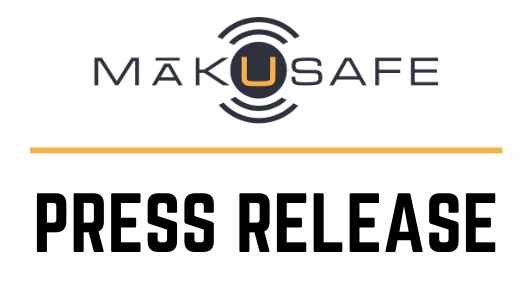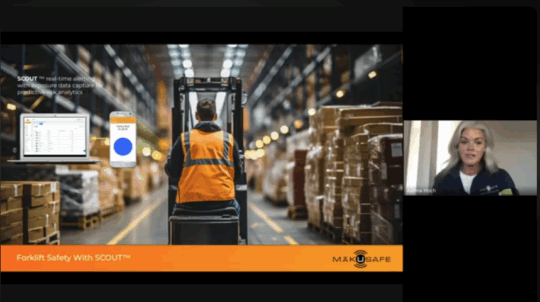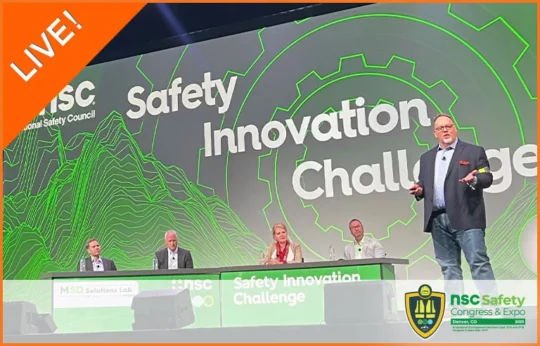Wearable devices promise improved safety, productivity
June 14, 2024
The following article is adapted from the original published by the Indiana Business Journal:
Adapting to Industry 4.0 often involves adding sensors to machinery and collecting data from robots. However, it can also entail using sensors to monitor workers to ensure they are working safely and efficiently.
The rise of wearable technology
Wearable devices that track locations, motion, and environmental factors such as temperature, air quality, and light are gaining popularity in the United States and abroad, according to a smart manufacturing industry survey.
According to Wisconsin-based Rockwell Automation, which manufactures industrial devices, 81% of over 1,500 participants in its annual smart manufacturing survey indicated plans to implement wearables in 2024. Additionally, the occupational safety and health publication EHS Today estimates that the wearables industry will invest nearly $3 billion in manufacturing applications alone by the end of this year.
Benefits of workplace wearables
“It’s about understanding capacity utilization and whether the tasks being performed are overstraining,” said Mitch Landess, vice president of innovation and digital transformation for Conexus Indiana. “These devices create data around that.”
Wearable devices can alert users when they spend time in noisy environments, areas that are not temperature-controlled, or perform repetitive motions that may cause injury over time.
Addressing data privacy concerns
However, while these devices are useful in industrial settings and for personal health and fitness, they also raise concerns about data privacy.
The U.S. Government Accountability Office reports that employees surveyed in a wearable pilot test expressed concerns about being tracked. The report also noted that data stored on wearables could be vulnerable to hackers due to software update difficulties and weak encryption.
“As wearables have the potential to collect private information, there is little clarity on who owns the user data or how it will be used,” four Iowa State University researchers wrote in a study on workplace wearable technology. “The collected information could facilitate bias, prejudice, and discriminatory behavior in the workplace. Wearables and mobile computing devices are also prone to security lapses and data breaches.”
Despite these concerns, the outlook for industrial devices remains promising.
Success stories in wearable technology
MākuSafe’s devices are used to monitor facility conditions and worker movements. Bill Champion, director of operations for Fratco, a drainage pipe manufacturer, reported that injuries and workers’ compensation claims and costs have drastically declined since implementing MākuSafe’s technology. “There’s no denying the correlation between the wearable and the drastically improved loss experience,” he said.
Champion acknowledged initial employee skepticism about being monitored but emphasized that the wearables help hold the company accountable for worker safety. “The device helps keep the employee aware of practices that might be contributing to an injury or unsafe workplace while helping us as a company remediate workplace areas and practices that could be contributing to an unsafe work environment,” he said.
MākuSafe’s approach
Tom West, vice president of marketing for MākuSafe, explained that their devices passively capture data about worker environments rather than monitoring specific health metrics. This data integrates with existing company monitoring systems and helps with contact tracing and monitoring worker proximity. The devices are not designed to constantly monitor worker locations but offer a voice memo option for workers to report safety problems.
“There is no data that we’re gathering that could be used to hold workers accountable,” West said. “The use here is holding the leadership team accountable for solving problems before they happen. Our device looks for when work conditions exceed normal thresholds or when slips, trips, or high-force motion occur to proactively keep workers safe.”
Emphasizing employer accountability
Zach Finn, director of risk management for Henriott Group, emphasized that the focus is on employer accountability rather than penalizing workers. “There are certainly productivity gains that come with improving safety,” he said.
West expects more companies to invest in wearables as the industry evolves, improving worker morale and communication between workers and leadership. “Technology has us constantly on this digital transformation journey, both personally and at work,” he said. “This may be a game changer, especially in the manufacturing industry, where talent retention and attraction are critical.”
For more detailed insights, the full article is available at the Indiana Business Journal.





